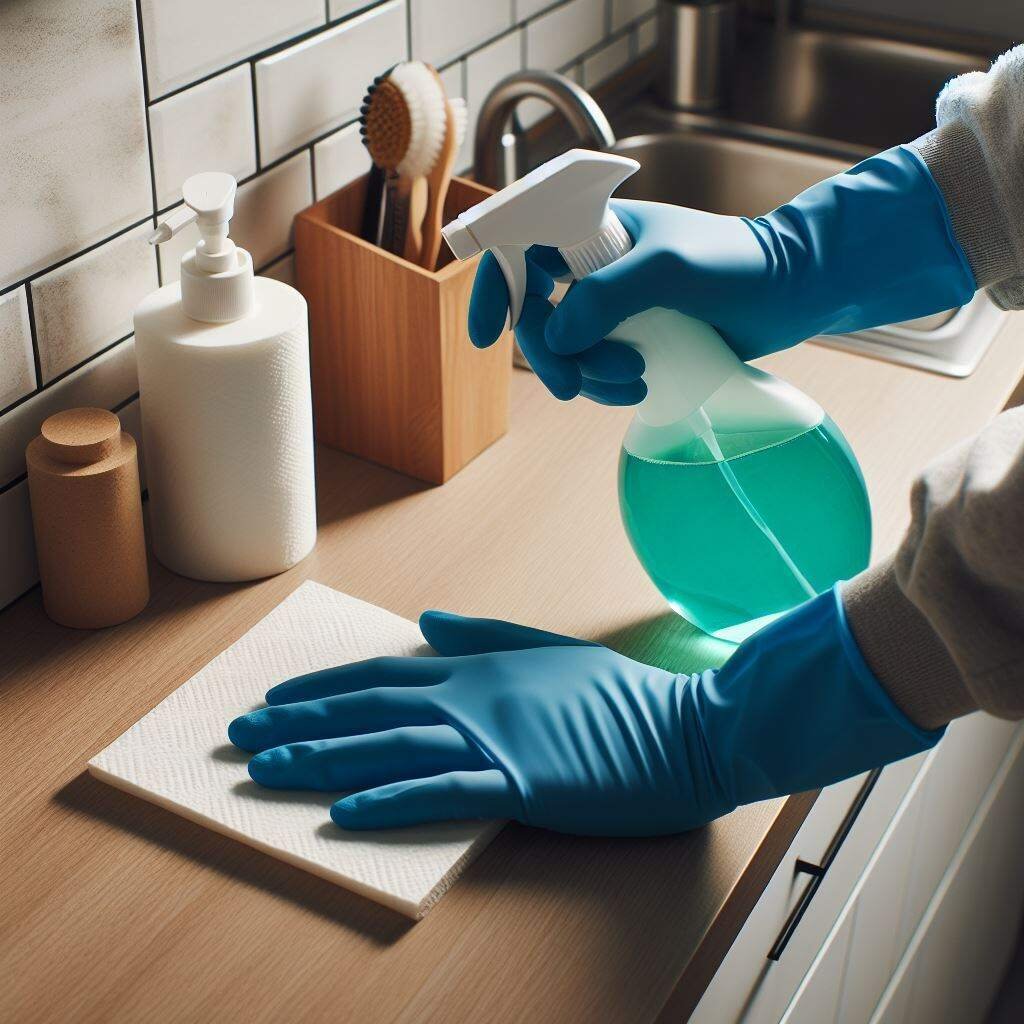Cabinets are among the most significant accessories for your kitchen. But they require equal attention and care when it comes to maintaining cleanliness. We believe you’re regular in cleaning and maintaining the looks of your kitchen cabinets. But that surely is not enough if you don’t want germs to build up right next to the spot where you cook your food.
Despite getting them cleaned frequently, the cabinets require a thorough deep cleaning, precisely the “disinfection session” at least twice a year, essentially in the wake of the ongoing pandemic. Dirt accumulation on tight spots trims, and narrow edges may offer a space for germs to grow, turning hazardous for your hygiene.

So, how exactly would you remove that sticky grime possibly filled with bacteria? Well, it’s not that tough if precautions are defined. Here are a few guidelines to know beforehand, followed by appropriate ways of disinfecting your kitchen cabinets:
Disinfecting Kitchen Cabinets – What are the Precautions?
Of course, there are certain guidelines to define in advance. It’s not just about pouring down that hard chemical all over the cabinet or soaking it into a hard solution. Follow these protocols to clean your cabinets the right way:
1. Define the Time of Cleaning
Sanitizing your kitchen cabinet is a bit different from a simple cleaning. It requires a complete “overhaul” of your cabinets, so you essentially need to clear them. If you’ve just moved to a new place, this is the best time for cabinet sanitizing. Else, you need to unload it at least twice a year for a thorough deep cleaning.

2. Determine the Type of Cabinet
What sort of solution you need to prepare depends on the type of your kitchen cabinet, precisely the fact whether it’s just the standard wood cabinet, the finished laminate cabinet, or a branded one. For a wooden cabinet, you need rather soft agents that go easy on the surface. As for the laminate cabinets, you may use diluted acidic solutions for more effective cleansing.
3. Prepare Yourself
Put on a nice pair of rubber gloves before dipping your hands into any toxic solution. Wear old, rough clothes that are no longer in use. You do not want a regular outfit to catch the splashes of the disinfectant. Bear in mind that agents like bleach, white vinegar solution, and disinfecting wipes can harm your skin. Therefore, self-care always takes precedence over everything else.
How to Disinfect Your Kitchen Cabinets?
Once you’ve understood the prerequisite of disinfecting your cabinets, it’s time to get into the procedure right away. When it comes to sanitization, different procedures are followed for the cabinets based on their types. We’ve made it all easy for you down here:
Cleaning Laminate Cabinets
Laminate or finished cabinets have rather sturdier and high enduring surfaces compared to standard wood cabinets. This allows them to withstand the high & low pH cleaning solutions such as vinegar & bleach respectively.
- Make a mixture of 1/4th bleach and 3/4th water.
- Dip a kitchen sponge or a rough cloth into the mixture and apply it all over the cabinets – inside, outside, the top, trims, and edges. Scrub the corners and tight spots, particularly the spots that are prone to germ accumulation.
- Let it sit for a couple of moments and wash it with a very low amount of lukewarm water – just enough to take away the solution and dirt altogether.
- Once washed, dry it using an absorbent cloth or towel. Be sure to let the trims and coroners before you load it again.
Go Green for Wood Cabinets

Now then, if your cabinets have an “exposed wood” composition, they would require extra care for cleaning. Never think of using bleach or other alkaline agents (with pH 7+), as they might begin to corrode the surface of the wood.
- Go for a rather natural option of 50/50 vinegar & water solution.
- Make a mixture of equal amounts of white vinegar and lukewarm water.
- Use a spray bottle to apply the mixture all over the cabinets.
- Now, use a soft brush to remove stains & grime. If the trims or spots are too tight to reach, using an old toothbrush could be effective.
- Let it sit for a couple of minutes and wash it away with limited water.
- Dry the entirety of the cabinets immediately after washing. Use an absorbent cloth for the purpose.
Disinfecting Wipes
If you do not want to go the DIY way, you have the option of using the disinfecting wipes – stay wary of using them on exposed wooden cabinets though. These wipes are suited only for the finished, laminate, and treated wood cabinets. Diluted vinegar is always the option for a typical wooden surface.
Conclusion
Kitchen accessories require constant effort to keep their shine & gloss intact, and cabinets are no exception. Sanitization of cabinets is just as important as outer cleaning. So, carefully select the appropriate way of disinfection based on your cabinet type, and be sure to repeat the process at least once in a six-month period.







